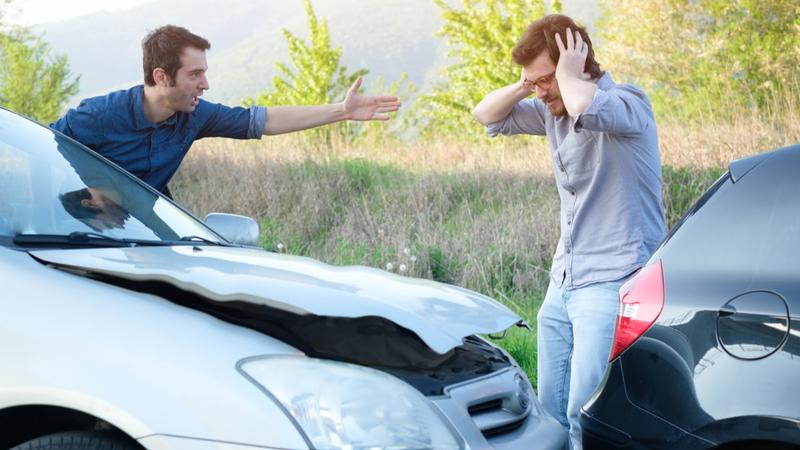Side-impact collisions, also known as T-bone or sideswipe accidents, are prone to severe injuries and fatalities. Although the aftermaths of all forms of accidents have devastating impacts, sideswipe crashes are known to cause more deaths because the gap between the driver or passengers and the point of impact is small, usually covered with a door and a glass window.
Do you know that about twenty-five percent of the total number of passenger vehicle fatalities experienced in almost all years result from side-impact collisions? The challenging bit is that there is no specific formula for determining the fault for this type of accident. If faulted drivers fail to admit they caused a crash, proving who was at fault requires strong evidence, especially from camera footage or witness statements.
In rear-end collisions, the car drivers at the back are held liable for the crashes in most cases. For side-impact collisions, you need to be very informed to determine the damage pattern during the accident to figure out which car hit the other first, and probably estimate the average speed of the vehicles before the crash occurred.
What Are Common Causes of Side-Impact Collisions?
Even with side airbags, sideswipe remains fatal because there is no physical structure to absorb the impacts or shield the occupants on the sides during the collision. Some common scenarios that contribute to side-impact collisions are:
- Over speeding under unfavorable driving conditions such as fog or rain
- A driver ignores the traffic lights.
- A driver fails to stop at stop signs
- A driver changes the lane abruptly and sideswipes another vehicle.
- Failure to take safety precautions when making turns
- Aggressive or reckless driving
- A driver’s distraction from phone calls or text messages
- Vehicle’s mechanical failure
What Should You Do After a Side-Impact Collision?
Crashed cars have spare parts and can be remodeled to customary conditions, but human life cannot. Once you experience a collision, it is prudent to prioritize emergency medical help for all casualties. Ensure the police officers dispatch within a few minutes to write the report and record the evidence. You can take photos if you are not injured, taking care of the oncoming traffic.
Once your car crashes, your insurance company will require an explicit explanation of the real cause of the collision. Although a reckless driver may hit you in your right lane, the driver might insist that you are the cause of the crash. In this case, the police’s report may cut the blame games because they keenly examine the conditions to generate evidence of who was at fault.
Police use several strategies to obtain reliable evidence. First, they may ask the eyewitnesses whether the lights were green or red during the collision. Secondly, they can inquire whether the driver failed to stop at a stop sign or other related investigative questions. In the absence of witnesses or witnesses giving unreliable information, the police might evaluate the points of damage on the car, skid marks, or other pieces of the facts.
What Evidence Do You Need to Prove Fault in a Side-impact Collision?
After a collision, you may be very clear and sure that the other driver was at fault. But you require substantial evidence to prove to the police and the insurance company to be compensated. Your pieces of evidence should show:
- The at-fault driver was responsible for the collision.
- The driver violated their legal duty of care.
- The at-fault driver’s violations of the duty of care directly caused your injuries.
Evidence to Support These Claims Includes:
For your injury claims to run smoothly and earn compensation with or without an attorney, you must have well-organized pieces of paperwork and evidence. These pieces of evidence are:
Police Report: Ensure the police officer generates an official accident report that carries valuable information relating to your claims, including contact information, traffic citations, witness statements, and diagrams of the collision.
Videos and Photographs: The most compelling evidence of the crash is videos and pictures. If you are not injured and safe from other traffic, take numerous images from different angles, including those of traffic signals, skid marks, stop or yield signs.
Witness Statements: Capture all witness statements in writing or on video in a presentable manner. Ensure the statements contain the witnesses’ contact information and names. These statements serve as powerful indicators of safety violations.
Surveillance Camera Footage: Pictures or videos captured by the security camera footage or red light cameras are solid evidence of who was at fault.
Medical Records: You should prioritize medical attention, especially if offered at the scene. You should request copies of all medical examinations, bills, and records from all medical specialists who offered you services related to the incident.
Our Final Thoughts
Although most types of accidents catch drivers off-guard, most of them can be controlled by complying with road safety measures. If an accident occurs, ensure you collect all available evidence to prove to the police and the insurance company for compensation. Keep the pieces well-organized to avoid having significant gaps that may render your claims irrelevant or unreliable.
